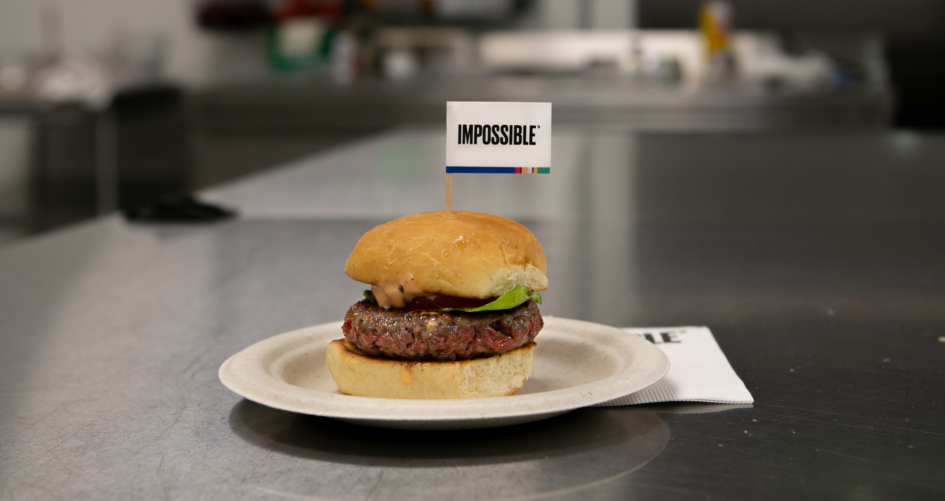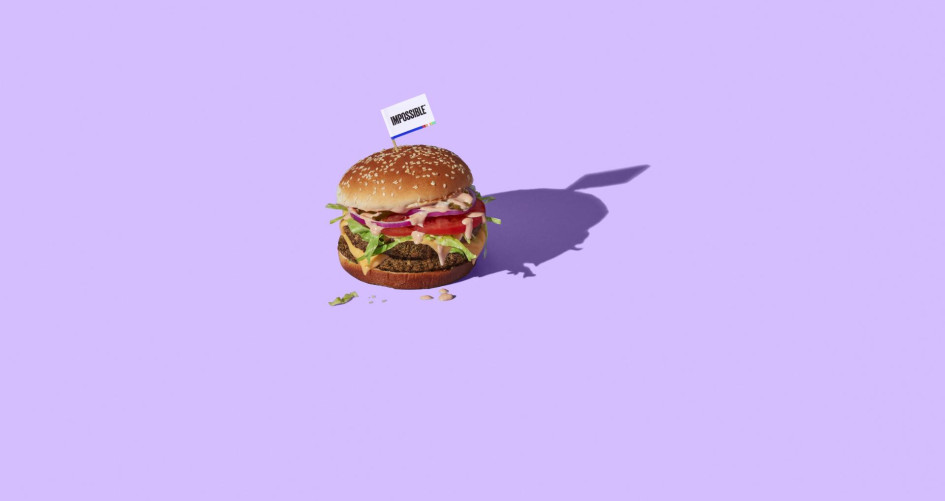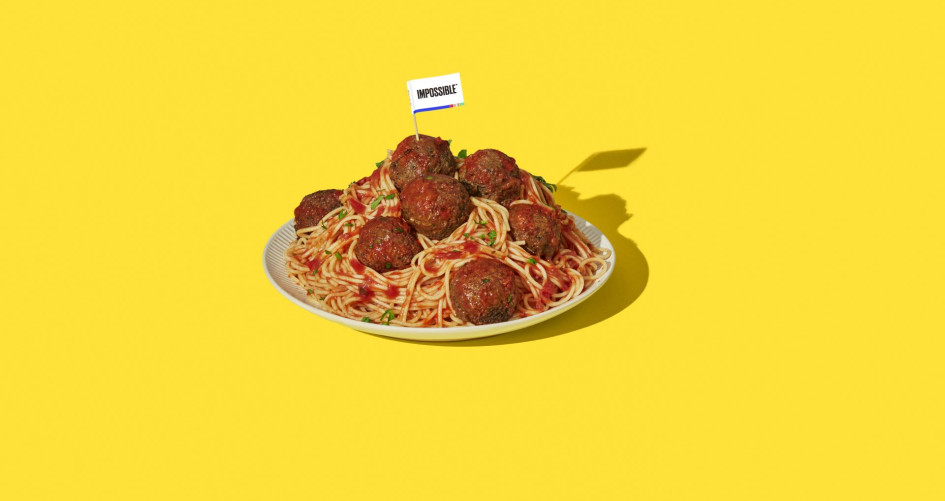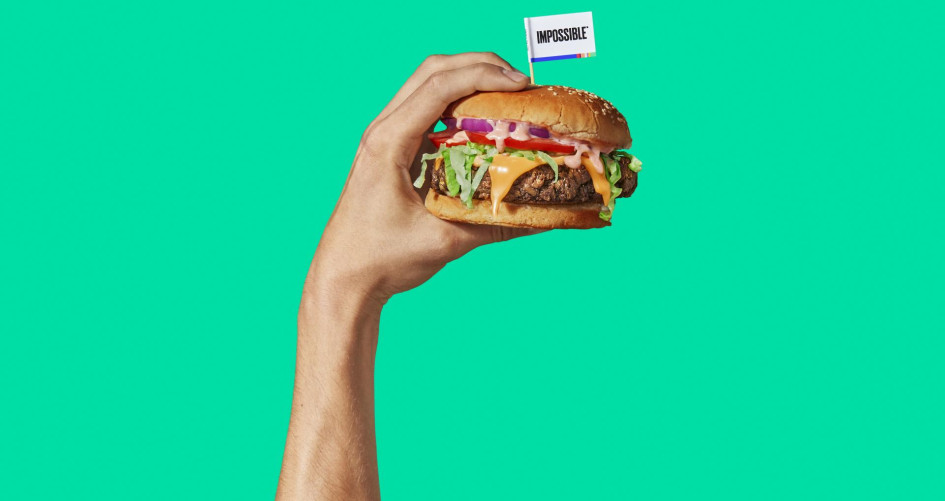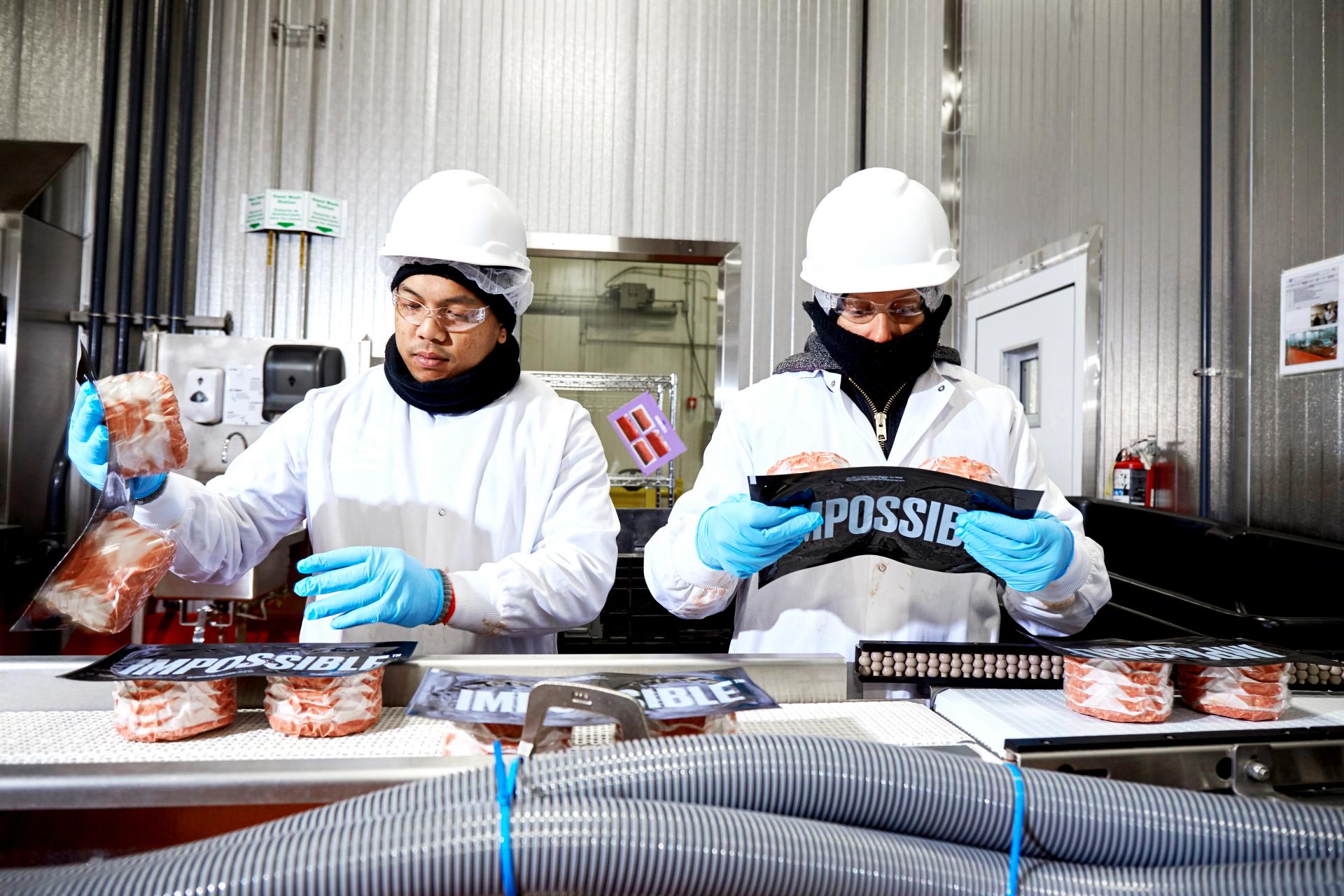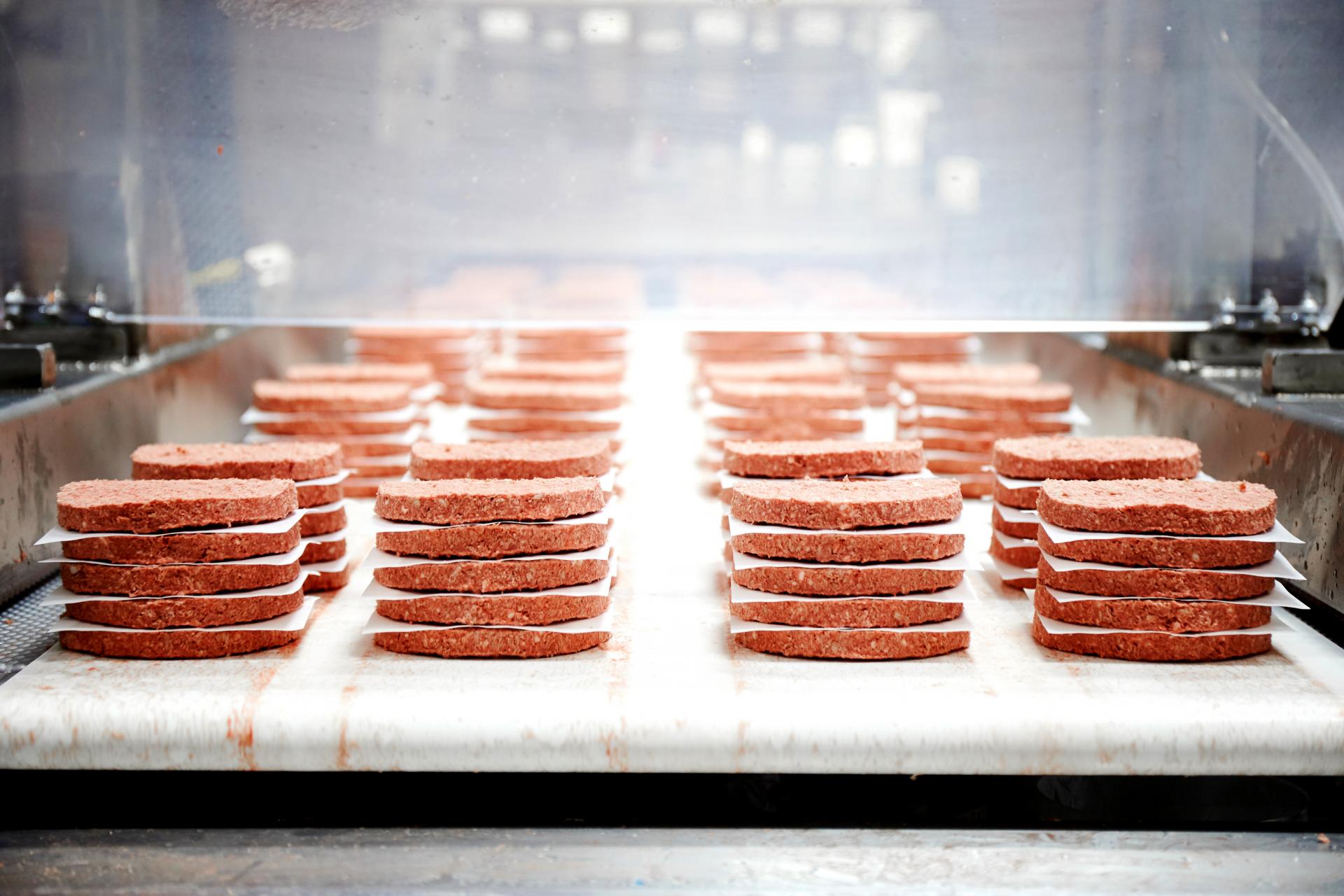Summary
Impossible Foods is creating plant-based replacements for meat products that are more sustainable and help displace market demand for meat products. By replacing animal products, consumers have enormous power to spare land for biodiversity and carbon capture, halt greenhouse gas emissions at the source, and alleviate demand on fresh water needed for healthy ecosystems.
Launched in 2016, Impossible Burgers are now served in more than 17,000 restaurants, including traditional fast food outlets like White Castle and Burger King. Their burgers have had proven successful in appealing to non-vegetarians, by converting them to Impossible Foods’ plant-based meat alternatives. For example, priced at only one dollar more than the Burger King Whopper, the Impossible Burger has the potential to replace meat products and cut greenhouse gas emissions in the process.
Key Facts
- In 2018, Impossible Burger sales spared the equivalent of 81,000 tonnes of greenhouse gas emissions and 900 million gallons of water.
- Compared to a traditional beef burger, the Impossible Burger requires 96% less land (viable habitat), 87% less fresh water, while generating 89% fewer greenhouse gas emissions.
- The Impossible Burger is appealing to more non-vegetarians than ever before – in 2016, the percentage of non-vegetarians who ordered their burger rose from 75% to 90%.
The Problem
To achieve the United Nations Sustainable Development Goals, the global food system must undergo transformative change to maintain Earth’s ecosystems. Currently, farmed animal production occupies 30% - 50% of the ice-free land on Earth, at great expense to natural habitats and potential carbon sequestration. The livestock sector generates at least a seventh of global greenhouse gas emissions and requires about one-third of all freshwater.
In other words, many argue that our reliance on livestock has reached the maximum threshold of the biophysical capability of the planet to sustain food production and necessary ecosystem services. Since animal production comes at the expense of forested land and natural habitats, transformative dietary changes are needed to stabilize the climate while keeping humans healthy. With animal product consumption rising across the globe, new tools are needed.
The Solution
Impossible Foods was founded with the intention of empowering consumers to help halt climate change, spare land for biodiversity, and keep fresh water available for natural habitats to thrive. In creating a credible meat-alternative, Impossible Foods is also helping establish technologies to improve long-term food security.
The signature product for Impossible Foods is its burger – known as the Impossible Burger. This burger is plant-based but replicates the taste of beef and uses significantly fewer products that harm our planet
Helping the Planet
To assess their impact on the planet, Impossible Foods conducted an ISO-compliant comparative Life Cycle Assessment weighing the environmental impacts of the Impossible Burger compared to industrial beef produced in the United States.
Compared to this beef, the Impossible Burger required 96% less land, 87% less fresh water, generated 89% less greenhouse gas emissions and resulted in 92% less pollution to fresh water ecosystems. In 2018, Impossible Burger sales of beef spared the equivalent of 81,000 tonnes of greenhouse gas emissions, 3.4 billion litres of water and 100 square kilometers of land.
Helping People
In creating a product with the potential to help transform our food systems, Impossible Foods has the future population in mind. The business helps mitigate climate change and biodiversity collapse, by proving the market for plant-based meat and enabling broad sector growth to transform food systems. Impossible Foods is one of a handful of companies proving that sales growth and consumer interest can coincide, at a massive scale in harmony with planetary health, by displacing large-scale, historic sources of resource degradation.
Additionally, to support local economies, Impossible Foods chose a vacant dessert factory in East Oakland, a neighborhood in the San Francisco Bay area of California, as its first manufacturing site. The company has been in the vanguard of new industry to the area, bringing new jobs and revenue to neighborhood that once hosted a robust food manufacturing sector which has since declined.
Looking forward, plant-based meat opens new opportunities for the agricultural community and generates a need for higher-margin crops, and as such, Impossible has worked closely with growers to develop pathways for commercialization of new proteins.
Spillover Effect
Impossible Foods has demonstrated the scalability of its model for food system resource-use reduction, while reducing its own environmental footprint.
Impossible Foods’ says its model proves three things — that consumers will enthusiastically receive and pay for plant-based meat alternatives; that this can be accomplished across all relevant sales channels that are necessary for impact scaling; and that their proprietary technology and food science platform can drive expansion across the entire industry, not just for Impossible Foods.
By design, Impossible Foods’ activities and strategy are replicable. They have developed the foundational technologies, which allow for the replication of plant-based meat manufacturing. These manufacturing technologies are also capable of being reproduced in most locations with existing capital and by modifying existing machinery. Finally, plant-based meat is more flexible than animal-based product, as it can be created from thousands of different crop-derived ingredients.




Images owned by the activity partners, all rights reserved.
